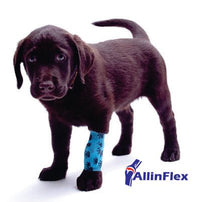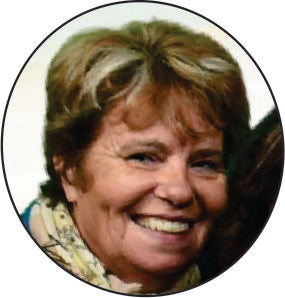The Best way to treat an injured Dog at home
Saskia OstermeierDog injuries do happen, tips on how to help your dog heal with natural home remedies.
The first and most important step when your dog has an injury is assessing the seriousness of the injury. If the dog has seriously injured his leg or other vital parts, or you have any doubt take him to your Veterinarian as soon as possible.
Due to their atavistic survival instinct, dogs are very good in hiding their injuries. By regular observing your dog you may be able to catch your dog's injury in the early stages.
Home remedies for minor Dog injuries:
- Administer cold treatments for recent, inflamed injuries, and apply heat for persistent injuries.
- Regular massages, chiropractic treatments, acupuncture, acupressure, and other therapies can help keep your dog in peak physical condition.
- Speed up tissue healing and decrease inflammation around your dog's injury with the aid of supplements, an enhanced diet, and herbs.

Muscle Injury in Dogs
A leg muscle strain in your dog can escalate into a ligament pull, a sprain, a bruise, and eventually into serious complications. With the rising incidence of muscle injuries in dogs, it's crucial to detect these issues early, treat them appropriately, and decrease the chance of your dog being severely injured, requiring surgery, or being forced to withdraw from competitions.
While all dogs are prone to injuries, the ones particularly at risk include:
- overweight dogs,
- occasional athletes,
- sedentary dogs,
- dogs with arthritis,
- those engaged in search and rescue activities,
- and dogs participating in flyball, agility, freestyle, disc dog (Frisbee), field work, dock diving, obedience, weight pulling, dog sledding, among other sports.
A dog's movements are balanced and elegant when alignment is perfect and muscles are toned.
Major limps, like a sprained wrist, are clearly visible, but by being alert, you can spot subtle signs such as stiffness, sensitivity, limited mobility, and even slight gait changes.
Exercises that test a dog's range of motion, like using a treat or toy to prompt your dog to make a sharp turn or to raise and lower its head, can highlight minor issues.
Regular massage and light touch can also provide clues:
- Does your dog shy away when you stroke or apply pressure to its hindquarters?
- Does any area feel unusually warm, hard, stiff, tender, or swollen?
- Does it feel different from the day before?
- Touch can quickly reveal inflammation, muscle strains, and other discomforts.

Keep a record of any observed changes in your dog using a calendar or notebook.
A detailed history of symptoms and treatments can provide valuable insights to veterinarians and other therapists when dealing with your dog's injury.
Needless to say, any severe issue should be addressed immediately. Whenever you're uncertain, consult your veterinarian, rehabilitation clinic, veterinary chiropractor, canine massage therapist, or other specialist.
First Aid for Dogs with Strained Muscles.

The key initial treatment for any injury is rest, followed by the basic therapies of heat and cold. But when should each be used?
An acute injury is one that manifests rapidly, within 24 to 48 hours of the triggering event.
Such dog injuries often result from a sprain, fall, collision, or other impacts, causing sudden acute pain, sensitivity, redness, swelling, hot skin, and inflammation.
Cold treatment is suggested for acute injuries to reduce swelling and alleviate pain. Dogs instinctively seek cool areas such as puddles, ponds, streams, or snow banks to soothe their injuries.
Frozen peas in a bag can be easily used as a cold pack since it can be moulded to any body part. Pet stores offer cold therapy products for pets, such as On-Ice bags and covers.
Medical supply stores offer a range of cold packs for sports injuries, including those filled with a gel that remains flexible even when frozen, which are particularly useful for fitting around a dog's muscles.
Because cold can hinder circulation and long exposure to ice can lead to complications, always wrap any exposed ice pack in a towel before application, remove the ice pack after 10 or 15 minutes, and wait for at least two hours before reapplying. Always avoid cold treatments right before exercise, workouts, training sessions, or competitions.
Chronic dog injuries, on the other hand, are those that have been present for a long time or keep recurring.
These injuries usually manifest as persistent pain, tightness, limited movement, or a dull ache, and heat therapy is most beneficial for them. Heat improves blood flow, relaxes muscles, and relieves pain.
You can use heating pads or warm towels, but be cautious not to burn your dog's skin. Heat should be applied for about 15-20 minutes, and just like with cold therapy, it should not be applied right before exercise or competition.
If your dog is in a lot of pain or the injury is severe, don’t hesitate to consult with a professional.
Take your pet to the vet for a thorough examination. Your vet may refer you to a rehabilitation clinic, a veterinary chiropractor, a canine massage therapist, or other specialists, based on the nature of the injury.
Dogs can recover from injuries, but the key is early detection, correct treatment, and proper post-injury care.
Regular checks, paying close attention to any changes in your dog’s behavior or physical condition, and being proactive with veterinary visits will ensure your pet remains in good health.
Always remember that while home treatments can be helpful for minor injuries, professional help is required for serious conditions.
On a final note, prevention is always better than cure.
- a dog needs regular exercise,
- a balanced diet,
- maintaining an ideal weight,
- and avoiding situations that could lead to injuries can keep your pet safe.
Regular engagement in physical activities keeps your dog fit and reduces the risk of injuries, but always be mindful of your dog's limitations and never push them too hard.
Remember, a healthy, happy dog is a happy home!




